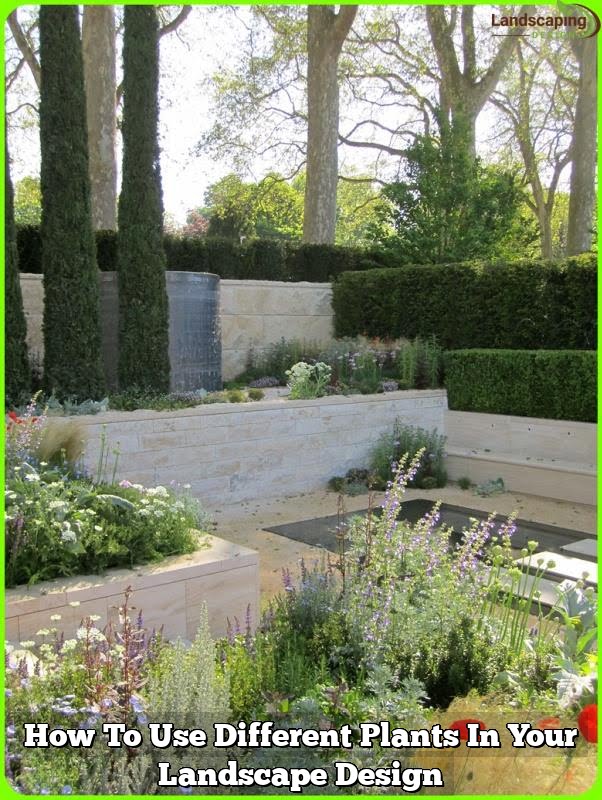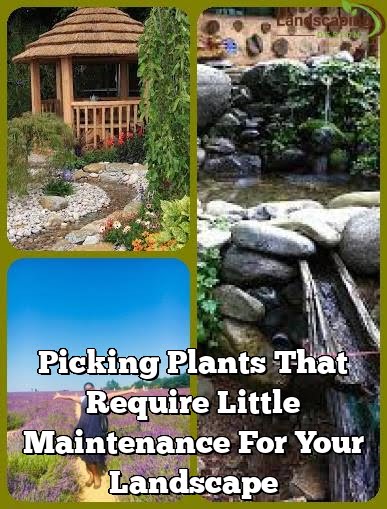Some people are content with sprucing up their landscape with simple but effective projects. For others, it’s a complicated science that involves new ideas and techniques and takes a huge amount of work. Whatever you need to learn landscaping for, you will find the tips that follow to be useful.
Choose native plants for your yard. Local plants are batter able to handle your soil conditions and are less likely to develop problems. This means you can almost ignore them and they’ll still thrive. Check out a local gardening store and see what plants are actually native in your area.
Install drip-irrigation as an easy way to keep your plants watered. These highly-efficient systems are easily installed by the layman, and provide a continuous drip of water. The water is also more efficient, because it is a drip rather than a stream, as would be the case with a hose or sprinkler system.
Prior to starting a landscaping project, get the soil tested. This way, you will know what has to be put in or what has to go, and you can work on these things prior to planting. This will ensure that you are able to have a healthy and successful garden.
It is very hard to landscape every part of your home at one time. It is best to break up an endeavor this large into smaller individual projects that are easier to budget and execute. This gives you the ability to change your design as necessary as time passes.
Use the Internet to your advantage; you are likely to spend less money and find a wider variety of products to purchase. There are quite a few online garden centers that sell excellent items, and typically the price is much cheaper than at a store! Always read reviews from other customers to make sure you are ordering a good product that will be delivered in a protective package. Be sure to shop around and compare prices.
When modifying your yard during landscaping projects, make sure you take existing structures into consideration before you ever touch your shovel to the dirt. Always take into consideration the location of various hazards in your landscape. These can include AC units, cables, sprinkler systems and even gutters. Do not impede these areas in your design. Contact your city of residence to find out where underground lines are so you won’t interfere with them when digging.
If you’re doing a landscaping project on your own, sit down and calculate all of your costs. First, write down a list of the needed materials and equipment. Next, figure out where you can get all of the materials. Costs can vary greatly from place to place. Look for creative ways to find quality materials at low cost.
Talk to an expert before beginning your project. Even if you will be doing the landscaping, talking to a pro is a wise idea. They can help make a good plan better or warn you about a bad one before you start. If you know what you are doing, a second opinion on the matter can still be very helpful.
Before you buy everything you need in your garden plan things out, this way you save money. Start by drawing up a basic sketch of your ideas so that it’s easier to figure out what sort of materials you’ll need. Doing spontaneous shopping at the garden center is fun, but you may regret it later if you can’t use everything you bought.
Don’t forget to consider your climate when choosing plants for landscaping. Some plants can’t survive harsh elements, and you could wind up disappointed by planting them. Also, before picking out which plants you want, take wind, rain amounts, and sunlight into consideration.
Before you design your landscape project, it may be a good idea to speak with a professional. Whether you need to hire a professional to install something, fix a mistake or even just give you advice, it’s worth every penny. All it should take is about an hour to consult with a professional to figure out what needs to be done.
You don’t have to work on your whole yard at once, it can be done in phases. Instead of trying to do your entire your at once, try dividing it into sections and doing one part at a time. This will make your project more affordable. You can choose to do one area at a time, or add one type of plant at a time throughout your yard.
Before you plant a single flower or shrub, make sure you understand the water and temperature requirements for your new plants. These factors will help you to determine what to plant. For example, if your area has water limitations or restrictions, then you want to choose low maintenance plants that require little watering.
Learn how to make use of space for your design and keep some tips in mind. For example, if you live on a busy street, you might want to plant bushes or hedges to lessen the noise of passing cars. Designate a section for a kid’s play area if you have children. You can divide your yard into different sections, one part can be for grilling, the other for socializing, and another for children to play in.
Ground covering plants can make your landscape look nice while filling in space. Plants such as ivy, creeping phlox and juniper will spread over the ground, which prevents the growth of weeds, and also reduces the amount of lawn that needs to be mowed. Also, they increase your landscape’s depth, color and dimension.
Haste is not an option. If your landscaping was already done when you acquired the home, it can be tempting to start over from the bottom up. Before you do this, consider waiting for a season to pass so you can check it out and see if you can salvage any of it. With the season plants change, so something that looks ugly in winter could actually look really beautiful in the summer or spring.
Landscaping is a broad term which means different things depending on who you ask. Whether it’s a quick pick-me-up, or a full-blown renovation, it can add elements to your yard which are beautiful and functional. Implement the tips mentioned, and your yard is sure to look beautiful.

Welcome to my blog about home and family. This blog is a place where I will share my thoughts, ideas, and experiences related to these important topics. I am a stay-at-home mom with two young children. I hope you enjoy reading it! and may find some helpful tips and ideas that will make your home and family life even better!





